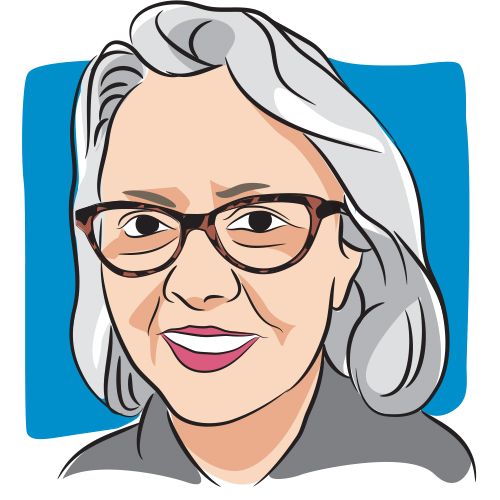Article
Alternative Treatment Options: What's Worked for Me
Traditional treatment options for breast cancer include surgery, chemotherapy, radiation and anti-hormone therapies but there are other options available.
Last year, after being diagnosed with breast cancer, I had to make a lot of tough decisions regarding my health care. I listened carefully as my oncologist described a treatment plan for me. His course of treatment was conventional and included surgery, chemotherapy, radiation and anti-hormone therapy. As I listened to the plan, I asked many questions and was surprised as he took time to answer with great care. When our conversation was complete, I asked what he would recommend if his wife or daughter were sitting before him instead of me. I was surprised at his answer. He told me he would not recommend chemotherapy. He mentioned there had been a lot of research done recently about pros and cons of chemotherapy and it had been discovered that, in many instances, chemotherapy did more harm than good. I left his office with a lot to think about.
Over the course of several days, I decided not to follow the conventional treatment plan prescribed by the oncologist. I did not make this decision lightly. I did my homework. I spent hours and hours reading medical journals. I wanted to make an informed decision. Armed with massive amounts of information, I shared my decision with the doctor. Much to my surprise, he agreed wholeheartedly and told me he'd support me.
I refused chemotherapy based on information received from my doctor along with articles I'd read. I did agree to radiation. After completing 28 rounds of radiation, I was prescribed an aromatase inhibitor, Arimidex (anastrozole). I was surprised at the adverse affects. The changes were drastic and ones I was not willing to continue. I called the doctor and made him aware of what was happening. He advised I stop taking the medication immediately and prescribed Tamoxifen. Tamoxifen was familiar to me. My mother-in-law had taken it for five years after she'd been diagnosed with breast cancer. Tamoxifen had been around for over 40 years. I agreed to try it. After two weeks, I was calling the doctor's office again. The side effects were horrible. I felt like an old woman. Every bone and joint in my body ached. I could barely walk. My hair was thinning. I felt worse than ever. I could not do this.
I began to think about which was more important: quality of life or quanitity of life. For me, quality of life was more important. With that in mind, it was more beneficial for me to choose the natural route to healing. I did not want poisonous chemicals racing through my body.
There are many unconventional treatments for cancer. Just do a Google search and you'll find thousands of them. Some of them are really out in left field, but there are natural methods that make sense. Those are the ones I'm going to implement into my healing process.
I've already eliminated sugar and processed foods from my diet — I'm focusing more on raw fruits and vegetables. There are so many preservatives in processed foods that we don't even know what we're eating unless we take a magnifying glass and read the labels.

Green tea contains chemicals known as polyphenols, which have antioxidant properties. The major group of polyphenols in green tea are called catechins, and the most important catechin seems to be epigallocatechin gallate (sometimes called epigallocatechin-3-gallate or EGCG). EGCG may help cause certain types of cancer cells to die in much the same way that normal cells do. This effect is important because cancer cells are different from normal cells in that they do not die when they should — they continue to grow and spread.
The Chinese have been drinking green tea for at least 3,000 years and it has been popular in some other Asian countries for at least 1,000 years. In recent years, scientists have begun to study its health effects more closely in laboratory and animal studies and in observational human studies.
Many laboratory studies have shown green tea acts against cancer cells in cell cultures. Test tube studies have suggested that compounds in the tea may help stop new blood vessels from forming, thereby cutting off the supply of blood to cancer cells.1

The second discovery I made while searching for natural alternatives to prescription medications for cancer is the Ayurvedic herb, Ashwagandha. According to Memorial Sloan Kettering Cancer Center:
- Ashwagandha is often used in formulations prescribed for stress, strain, fatigue, pain, skin diseases, diabetes, gastrointestinal disease, rheumatoid arthritis, and epilepsy. It is also used as a general tonic, to increase energy and improve health and longevity and topically as an analgesic.
- Ashwagandha is rich in iron.
- Ashwagandha also reduced growth of breast, central nervous system, colon, and lung cancer cells without affecting normal cells.
- It was shown to prevent chemotherapy-induced neutropenia in mice.
- In a small study of breast cancer patients, ashwagandha alleviated chemo-induced fatigue and improved the quality of life.
These are natural remedies that I've decided to incorporate into my daily routine. I will be diligent to record any unusual side effects and discuss those with my medical team. I'm also going to be keeping detailed notes on the benefits I receive as I continue with this course of action. In essence, I'm making myself into a human guinea pig. It is my hope that something I discover will help someone else.
I am not opposed to conventional medical procedures or medications but I do know my body. I know what I can and cannot handle. I know what I will and will not accept regarding anything that adversely affects my quality of life. It is the responsibility of each person to make their own informed decision. There are choices. What works for one person may not work for another.
On my next three-month checkup with the oncologist, I'll have my bloodwork checked again. It will be interesting to see, over the course of the next year, how my tumor markers have changed. If they've decreased or remained level, I'll continue on with my current regimen. If they've changed negatively, I may consider a change. I'll cross that bridge when I come to it, because the power to choose is mine.




